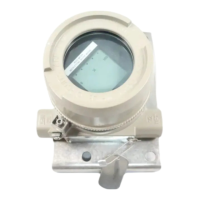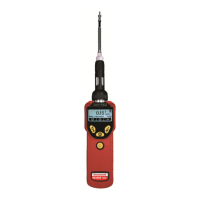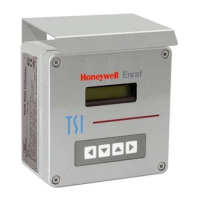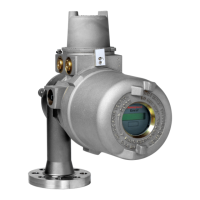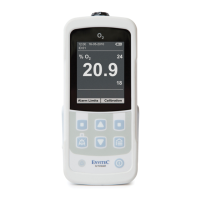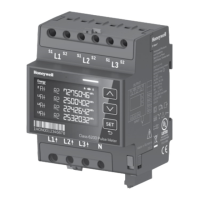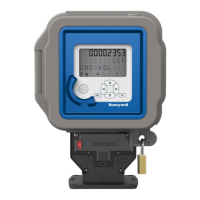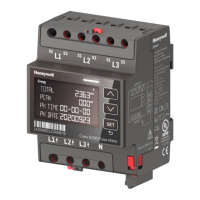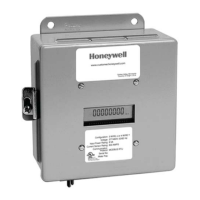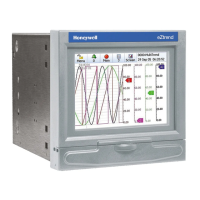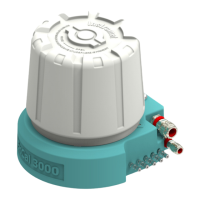
Do you have a question about the Honeywell ENCAL 3000 and is the answer not in the manual?
| Hazardous Area Approvals | ATEX, IECEx |
|---|---|
| Applications | Natural gas custody transfer, process monitoring, and regulatory compliance |
| Communication Protocols | Ethernet |
| Measurement Range | 0-100% |
| Accuracy | Better than ±0.1% for energy measurement |
| Resolution | 0.01% |
| Response Time | <30 seconds |
| Operating Temperature | -20°C to +55°C |
| Operating Humidity | 5% to 95% RH non-condensing |
| Power Supply | 100-240 VAC |
| Battery Life | Not applicable |
| Weight | Varies depending on configuration; consult datasheet |
Describes the hardware of the gas chromatograph and its subsystems.
Provides guidance on how to effectively use the manual for understanding the measuring system.
Defines safety and warning symbols used in the document and on the device.
Instructions for unpacking and checking the received measuring instrument and components.
Guidelines to prevent transport damage and ensure correct storage conditions.
Specifies the analysis of natural gas or similar gases as the device's intended purpose.
Outlines operator duties regarding industrial safety and device maintenance.
Details on device design for explosive atmospheres and relevant certifications.
Specifies requirements for personnel performing hardware work on the device.
Highlights warning labels and their importance for safe operation.
Provides essential safety guidelines for handling various process gases.
Covers electrical safety, earthing, and emergency stop requirements.
Details regulations and procedures for explosion-proof equipment handling.
Describes the device's on-line gas chromatograph function and its Ex-d housing.
Lists key features like compact design, stand-alone operation, and analytical capabilities.
Explains the fundamental analytical technology used for gas mixture analysis.
Details the separation column's role and different types used in gas chromatography.
Describes the thermal conductivity detector (TCD) and its function in analysis.
Explains the sample injector's function in precisely introducing sample into carrier gas.
Covers how chromatograms are generated and results are presented.
Details the subcomponents of a gas analysis channel, including modules and controllers.
Lists and illustrates the main components of the processor board.
Explains how to protect parameters using configuration jumpers.
Describes the processor board's connection and cooling options within the device.
Outlines the functions of the interconnection board for power and data.
Describes the functions of the internal sampling system, including pressure regulation.
Explains the DBB function for sealing gas streams and preventing mixing.
Details the function of the sample bypass for refreshing dead volumes.
Specifies compliance with national, local, and company codes for installation.
Describes the typical measurement point setup and gas supply requirements.
Provides guidance on professional installation for safe and problem-free operation.
Presents detailed dimensions of the device in millimeters.
Covers environmental influences and site requirements for installation.
Offers general engineering rules for handling components and fitting parts.
Details requirements for electrical connections, including safety standards.
Explains the use and specifications of cable glands for electrical connections.
Provides instructions for connecting electrical and signal cables to the interconnection board.
Illustrates the layout and connectors of the Interconnection Board Version 1.x.
Illustrates the layout and connectors of the Interconnection Board Version 2.x.
Outlines the steps for testing electrical installation integrity using a multimeter.
Describes the installation of fluid interfaces and connections.
Details the various gas connections on the device and their fittings.
Explains a configuration using different carrier gases for two analytical modules.
Provides step-by-step instructions for connecting and replacing gas cylinders.
Details the procedure for conducting a system tightness test using a gas detector.
Lists prerequisites for commissioning, including safety and gas connection checks.
Describes the sequence for starting up the device and initial configuration.
Guidance on checking and adjusting device settings and output signals.
Provides information on preparing the device for later use or return.
Instructions to follow before removing the device to prevent hazards.
Guidelines for identifying and rectifying hardware faults in the device.
Specific steps to address faults related to the gas supply system.
Steps to diagnose and resolve issues with electrical supply and insulation.
Covers routine inspections, preventive checks, and cleaning procedures.
Procedure for visually inspecting fluid and electrical connections for damage.
Steps to perform a tightness test on gas connections to detect leaks.
Instructions for visually inspecting and checking calibration and carrier gas cylinder pressures.
Procedure for reading and adjusting process gas inlet pressures.
Optional checks for flow meters to verify gas stream rates.
Guidance on inspecting and replacing inlet filters to prevent errors.
Steps for visually inspecting housing parts for damage and leaks.
Procedure for inspecting the interior of the housing for damage or loose wires.
Instructions for monitoring, cleaning, and maintaining the breather valve.
Information on gas cylinders required for operation and their replacement.
Recommendations for annual inspections and replacement of auxiliary gases.
Information on services provided by Honeywell for maintenance and repair.
Highlights security risks associated with network connections for data transfer.
Guidance on reporting vulnerabilities and implementing network security measures.
Recommends best practices for creating and managing secure passwords.
Advises on using firewalls to restrict network traffic and allow only essential protocols.
Describes the TCP/IP port for communication with PCs and other hosts.
Explains the use of serial ModBus ports for communication with hosts.
Details various options for accessing the EnCal 3000 remotely.
Covers ModBus configuration settings and register details.
Describes the additional heating system for use in freezing temperatures.
Indicates that the analyser has only one installed channel.
Explains the EnCal 3000 Quad system combining two housings for extended analysis.
Details the analyser configuration for using Hydrogen as a carrier gas.
Lists abbreviations, definitions, and terminology used throughout the documentation.
Provides definitions for terms and concepts used in the manual.
Presents the EC-Type Examination Certificate for the gas analyzer.
Contains the EU Declaration of Conformity for the EnCal 3000 device.
Provides the IECEx Certificate of Conformity for explosive atmospheres.
Details the FM Certificate of Conformity for hazardous location electrical equipment.
An alphabetical index of keywords used in the manual for quick reference.
A comprehensive list of all figures included in the hardware manual.
